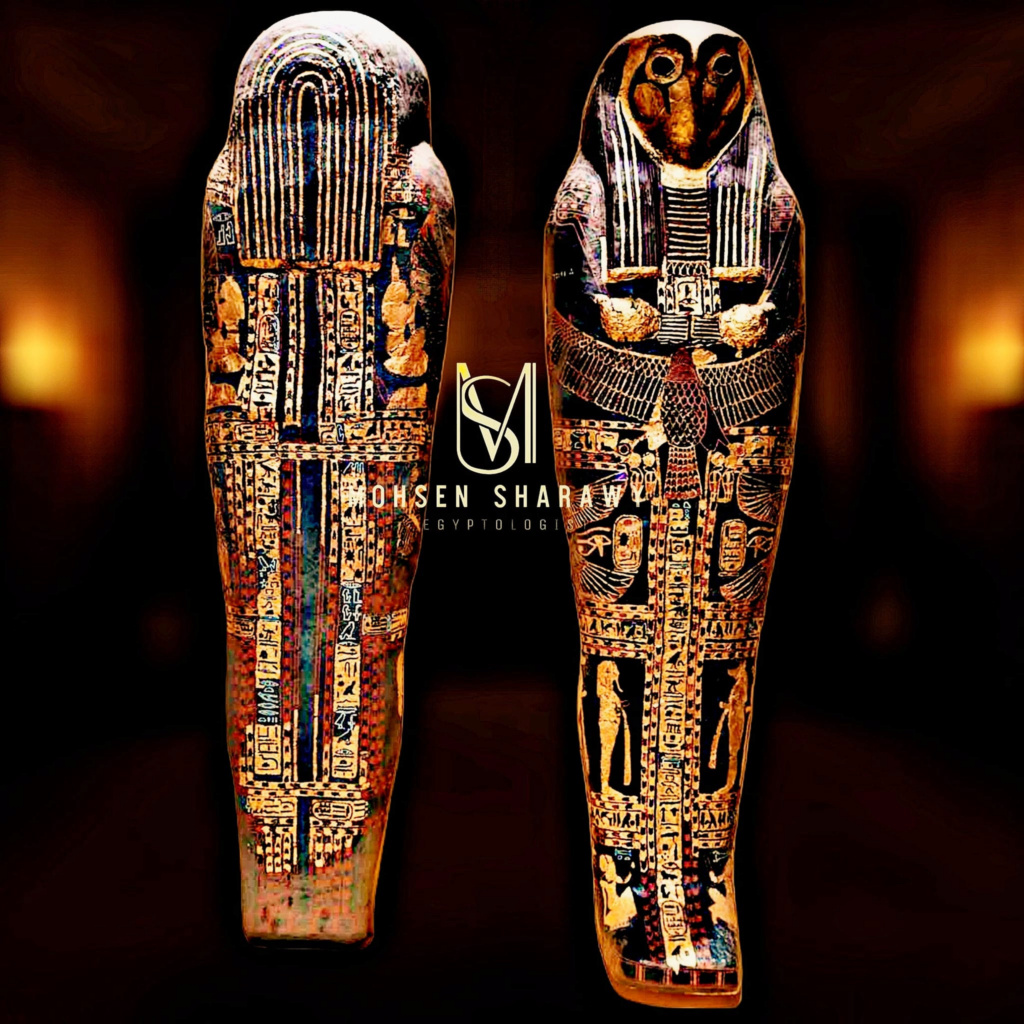A coffin of King Sheshenq II

Nothing compares to the beauty of the interior of the coffin of King Sheshenq II, inside which the king’s mummy was found wrapped in a linen shroud, decorated with a gold leaf, and a false head and face made of gold, extremely splendid and splendid, reflecting the beauty and youth of the king. The shroud was engraved with texts from the Book of the Dead, a collection of prayers and incantations that were intended to protect the dead and help them on their journey to the afterlife.
Shoshenq II (in English: Shoshenq II), a Pharaonic king of the Twenty-Second Dynasty of Egypt. Of Libyan-Berber origins in the period 887-885 BC.
He assumed power in 887 BC, after Osorkon I, and Takelot I followed him.
The coffin of this king, made of silver, has the head of a falcon. It was found on Tuar, and evidence of the conditions indicated that it was intact and had not been harmed. It was initially thought, with regard to the place in which it was found, that it belonged to King “Psusennes,” but when the lid of his coffin was lifted, the gilded scrolls of the Pharaoh appeared. It became clear from reading the name that it belongs to the king nicknamed “Haqi Khabar Ra,” and he is, as we mentioned before, “Sheshenq II.” The coffin is made of silver, and is in the shape of a scepter with the head of a falcon. It does not have any decorations on the outside, and it was sufficient for him to be depicted inside it. Female image.
But on the other hand, the artist who made it showed skill in decorating the lid of this coffin. It is in the form of a human being with the head of a falcon, and the two braids of wigs that adorn his head. The artist used methods in shaping them, and the falcon’s beak is a borrowed one. The artist surrounded the eyes with three incised circles, and he outlined the wig with lines. Parallel, and between the two braids were placed a string of beaded necklaces, while the hands were holding a scepter and a scepter and were made separately. After the hair braids, a winged scarab can be seen surrounding three rows of flower-shaped ornaments, and a bird with the head of a ram is seen spreading its wings over the entire width of the cover. The tail of this bird begins a line of inscriptions expressing the wishes of the deceased king, and here is the translation:
The golden falcon coffin is a witness to the greatness of ancient Egypt, its belief in life after death, and its fine art and craftsmanship. It is now displayed inside the Egyptian Museum in Cairo.
Source: websites

